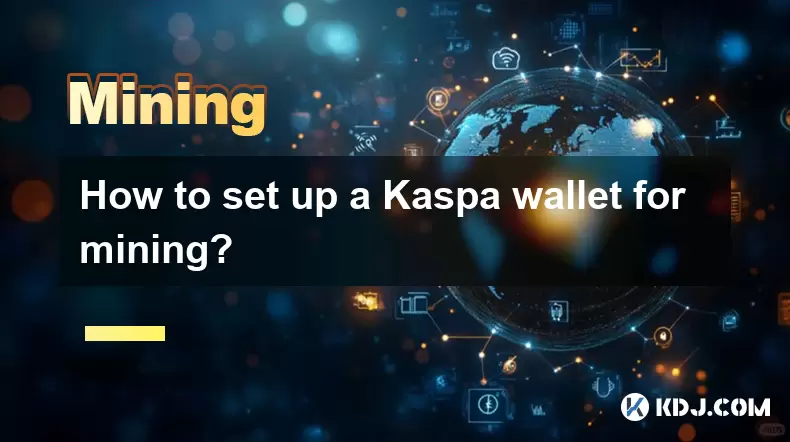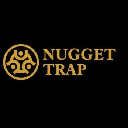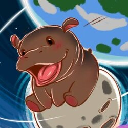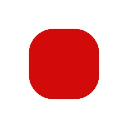-
 bitcoin
bitcoin $114684.631706 USD
-0.87% -
 ethereum
ethereum $4228.677447 USD
1.58% -
 bnb
bnb $1294.880693 USD
-1.16% -
 tether
tether $1.000819 USD
-0.02% -
 xrp
xrp $2.605138 USD
2.79% -
 solana
solana $209.908690 USD
5.89% -
 usd-coin
usd-coin $0.999903 USD
-0.03% -
 dogecoin
dogecoin $0.213423 USD
2.93% -
 tron
tron $0.322721 USD
-0.10% -
 cardano
cardano $0.727247 USD
3.66% -
 hyperliquid
hyperliquid $42.339456 USD
6.05% -
 chainlink
chainlink $19.910811 USD
5.16% -
 ethena-usde
ethena-usde $1.000557 USD
0.00% -
 stellar
stellar $0.349734 USD
2.69% -
 bitcoin-cash
bitcoin-cash $543.848687 USD
-0.21%
How to set up a Kaspa wallet for mining?
A Kaspa wallet is essential for mining, as it securely stores your KAS rewards and provides the valid address needed to receive payouts from your miner.
Jul 23, 2025 at 10:43 pm

Understanding the Role of a Kaspa Wallet in Mining
Before initiating the process of setting up a Kaspa wallet for mining, it's essential to understand its purpose. A Kaspa wallet serves as a digital container where mined KAS tokens are stored. Unlike some cryptocurrencies that allow mining rewards to be sent directly to exchanges, Kaspa mining requires a personal wallet address to receive block rewards. This is because Kaspa operates on a blockDAG structure, which demands a high-throughput network and decentralized node participation. Therefore, having a secure and properly configured Kaspa wallet is a prerequisite for receiving mining payouts.
Mining software such as kaspaminer or GMiner requires a valid wallet address during configuration. Without this address, the miner cannot submit solved blocks or receive compensation. It's critical to note that the wallet does not need to be connected to the internet during mining, but the address must be correctly formatted and belong to a compatible wallet client. Using an incorrect or mistyped address may result in permanent loss of mined tokens.
Selecting a Compatible Kaspa Wallet Client
Several wallet options are available for Kaspa, each with unique features. The most widely used and trusted is the official Kaspa Wallet (Qt GUI), which supports full node synchronization and provides enhanced security. Another option is the Web Wallet (web.kaspa.org), which is lightweight and accessible from any browser. For users prioritizing security, the CLI (Command Line Interface) wallet is recommended, especially when used on a dedicated machine.
To begin, navigate to the official Kaspa GitHub repository or the community website to download the wallet software. Ensure you are downloading from a verified source to avoid malware. For desktop use, the Qt wallet is ideal. After downloading, extract the files and run the executable. Upon first launch, the wallet will prompt you to choose a data directory and begin syncing with the Kaspa network. This process may take several hours depending on your internet speed and hardware.
During setup, you will be asked to create a wallet passphrase. This passphrase encrypts your private keys and is crucial for fund recovery. Store it in a secure offline location. Once the initial sync is complete, the wallet will generate a receive address, which appears as a long string starting with “kaspa:” — this is your mining payout address.
Generating a Valid Mining Payout Address
After the wallet is fully synchronized, access the 'Receive' tab to view your public address. The address will be displayed in both QR code and text format. It is imperative to copy the full address, including the “kaspa:” prefix, as omitting it may lead to transaction rejection. Some mining pools and solo mining setups require the full Bech32 format, which the official wallet provides by default.
If you are using the CLI wallet, execute the command:
./kaspa-wallet --command 'getnewaddress'This will output a new Bech32-encoded address. Confirm that the address starts with “kaspa:” and contains no typos. You can test the address by sending a small amount from another wallet or using a faucet if available. Once confirmed, this address can be used across any Kaspa mining software.
It is advised not to reuse addresses for multiple mining rigs unless using a pool that supports merged mining or address grouping. Each mining instance should ideally point to a unique address for better transaction tracking and security.
Configuring Mining Software with Your Kaspa Wallet
With your Kaspa wallet address ready, the next step is integrating it into your mining software. For kaspaminer, open the configuration file (usually config.json) in a text editor. Locate the field labeled 'address' or 'wallet' and paste your full kaspa: address. Ensure there are no extra spaces or line breaks.
Example configuration snippet:
{ 'miner': {
'pool': 'stratum+tcp://pool.kaspa.org:1111',
'address': 'kaspa:qpmn379727x5a5c5zjz58q2x2a4g3e9g0g0k7f3j3r3j3j3j3j3j3j3j3j3j3',
'worker': 'rig01',
'threads': 8
}}
For GMiner, launch the batch file or command line with the following parameters:
miner.exe --algo kheavyhash --server stratum+tcp://pool.kaspa.org:1111 --user kaspa:qpmn379727x5a5c5zjz58q2x2a4g3e9g0g0k7f3j3r3j3j3j3j3j3j3j3j3j3.rig01Replace the address with your own and adjust the worker name as needed. Save the configuration and launch the miner. The software will connect to the pool, authenticate using your wallet address, and begin submitting shares. Monitor the console output to confirm that shares are accepted and that your hashrate is being reported.
Securing Your Kaspa Wallet and Private Keys
Security is paramount when managing a Kaspa wallet used for mining. The wallet.dat file, which contains your private keys, must be backed up and encrypted. In the Qt wallet, go to Settings > Backup Wallet and save the file to an encrypted USB drive or offline storage. Never store backups on cloud services or connected devices.
Enable disk encryption on the machine hosting the wallet, especially if it's also running mining software. Use strong, unique passwords for both the system and the wallet. Consider running the wallet on a separate, air-gapped machine if managing large amounts of KAS.
Regularly update the wallet software to the latest version to benefit from security patches. Avoid downloading wallet updates from third-party sites. Verify checksums provided by the official Kaspa team before installation. Disable unnecessary remote access to the wallet machine to reduce attack surface.
Troubleshooting Common Wallet and Mining Issues
If mining software fails to connect or reports invalid credentials, double-check the wallet address format. A missing “kaspa:” prefix or a typo in a character can prevent reward distribution. Ensure your firewall or antivirus is not blocking outbound connections on ports 1111 or 16111.
If the wallet fails to sync, verify your internet connection and check the status of Kaspa network nodes. You can manually add trusted peers via the configuration file. For CLI wallets, use the --connect flag to specify a known node.
In cases where mined rewards do not appear in the wallet, confirm that the mining pool has processed your shares and issued a payout. Some pools have minimum payout thresholds. Check the blockchain explorer (e.g., explorer.kaspa.org) by pasting your address to verify on-chain transactions.
FAQs
Can I use a hardware wallet like Ledger for Kaspa mining payouts?Currently, Ledger does not natively support Kaspa. While you can manually verify the address generated by a compatible app, direct integration with mining software is not feasible. Use the official software wallet until hardware wallet support is officially announced.
What happens if I lose my wallet.dat file and passphrase?Losing both the wallet.dat file and passphrase results in irreversible loss of funds. Kaspa, like most cryptocurrencies, does not have a recovery mechanism. Always maintain multiple encrypted backups in separate physical locations.
Is it safe to run the Kaspa wallet on the same machine as the miner?It is technically possible, but not recommended for high-value operations. Running both on the same machine increases exposure to malware and keylogging. For better security, isolate the wallet on a separate, offline device.
Do I need to keep the wallet open all the time for mining to work?No. The wallet does not need to be running during mining. Mining software only requires the public address. The wallet must be open only when you wish to view balances or initiate transactions.
Disclaimer:info@kdj.com
The information provided is not trading advice. kdj.com does not assume any responsibility for any investments made based on the information provided in this article. Cryptocurrencies are highly volatile and it is highly recommended that you invest with caution after thorough research!
If you believe that the content used on this website infringes your copyright, please contact us immediately (info@kdj.com) and we will delete it promptly.
- XRP Price Prediction: Weekend Rollercoaster or Rally?
- 2025-10-12 08:45:16
- Bittensor (TAO): Super Bullish Signals Point to Potential 2x Rally
- 2025-10-11 10:25:12
- Silver Price Correction: Navigating the Dip & Identifying Key SEO Keywords
- 2025-10-11 10:25:12
- Decoding Crypto Trends: Bittensor's Bull Run, Cardano's Dip, and LivLive's Presale Buzz in 'Uptober 2025'
- 2025-10-12 08:45:16
- MoonBull: The Crypto Meme Coin Promising 1000x Gains?
- 2025-10-11 10:30:01
- Crypto Payroll Revolution: Stablecoins, Altcoins, and the Future of Salary Payments
- 2025-10-11 10:30:01
Related knowledge

The difference between staking and mining
Sep 24,2025 at 05:18am
Understanding Staking in the Cryptocurrency Ecosystem1. Staking involves holding funds in a cryptocurrency wallet to support the operations of a block...

How to participate in testnet mining?
Sep 22,2025 at 09:18am
Understanding Testnet Mining in the Crypto Ecosystem1. Testnet mining is a method used by blockchain developers to simulate real-world conditions on a...

How to dispose of abandoned mining machines?
Sep 19,2025 at 08:19pm
Assessing the Condition of Abandoned Mining Rigs1. Begin by inspecting each mining machine for visible damage, corrosion, or missing components. Machi...

How to identify high-quality mining pools?
Sep 21,2025 at 03:19pm
Reputation and Track Record1. A mining pool’s reputation is built over time through consistent performance and transparency. Pools that have operated ...

Advantages of decentralized mining pools
Sep 20,2025 at 04:36pm
Enhanced Security and Resistance to Censorship1. Decentralized mining pools operate on blockchain-based smart contracts, eliminating the need for a ce...

What is mining machine overclocking?
Sep 21,2025 at 07:19pm
Understanding Mining Machine Overclocking1. Mining machine overclocking refers to the process of increasing the operating frequency of a cryptocurrenc...

The difference between staking and mining
Sep 24,2025 at 05:18am
Understanding Staking in the Cryptocurrency Ecosystem1. Staking involves holding funds in a cryptocurrency wallet to support the operations of a block...

How to participate in testnet mining?
Sep 22,2025 at 09:18am
Understanding Testnet Mining in the Crypto Ecosystem1. Testnet mining is a method used by blockchain developers to simulate real-world conditions on a...

How to dispose of abandoned mining machines?
Sep 19,2025 at 08:19pm
Assessing the Condition of Abandoned Mining Rigs1. Begin by inspecting each mining machine for visible damage, corrosion, or missing components. Machi...

How to identify high-quality mining pools?
Sep 21,2025 at 03:19pm
Reputation and Track Record1. A mining pool’s reputation is built over time through consistent performance and transparency. Pools that have operated ...

Advantages of decentralized mining pools
Sep 20,2025 at 04:36pm
Enhanced Security and Resistance to Censorship1. Decentralized mining pools operate on blockchain-based smart contracts, eliminating the need for a ce...

What is mining machine overclocking?
Sep 21,2025 at 07:19pm
Understanding Mining Machine Overclocking1. Mining machine overclocking refers to the process of increasing the operating frequency of a cryptocurrenc...
See all articles










































































